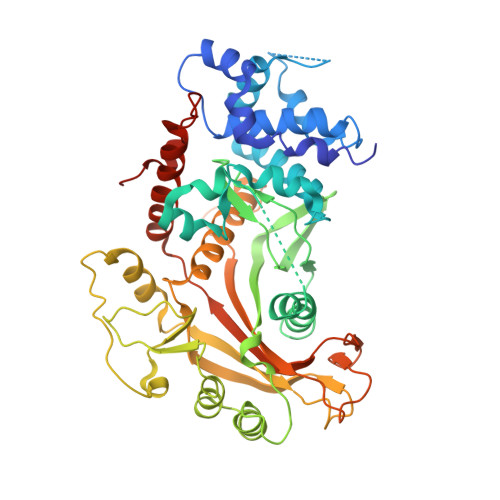A Bridge Crosses the Active Site Canyon of the Epstein-Barr Virus Nuclease with DNase and Rnase Activity.
Buisson, M., Geoui, T., Flot, D., Tarbouriech, N., Ressing, M.E., Wiertz, E.J., Burmeister, W.P.(2009) J Mol Biology 391: 717
- PubMed: 19538972
- DOI: https://doi.org/10.1016/j.jmb.2009.06.034
- Primary Citation of Related Structures:
2W45, 2W4B - PubMed Abstract:
Epstein-Barr virus, a double-stranded DNA (dsDNA) virus, is a major human pathogen from the herpesvirus family. The nuclease is one of the lytic cycle proteins required for successful viral replication. In addition to the previously described endonuclease and exonuclease activities on single-stranded DNA and dsDNA substrates, we observed an RNase activity for Epstein-Barr virus nuclease in the presence of Mn(2+), giving a possible explanation for its role in host mRNA degradation. Its crystal structure shows a catalytic core of the D-(D/E)XK nuclease superfamily closely related to the exonuclease from bacteriophage lambda with a bridge across the active-site canyon. This bridge may reduce endonuclease activity, ensure processivity or play a role in strand separation of dsDNA substrates. As the DNA strand that is subject to cleavage is likely to make a sharp turn in front of the bridge, endonuclease activity on single-stranded DNA stretches appears to be possible, explaining the cleavage of circular substrates.
- UMI UJF-EMBL-CNRS, Grenoble, France.
Organizational Affiliation:
















